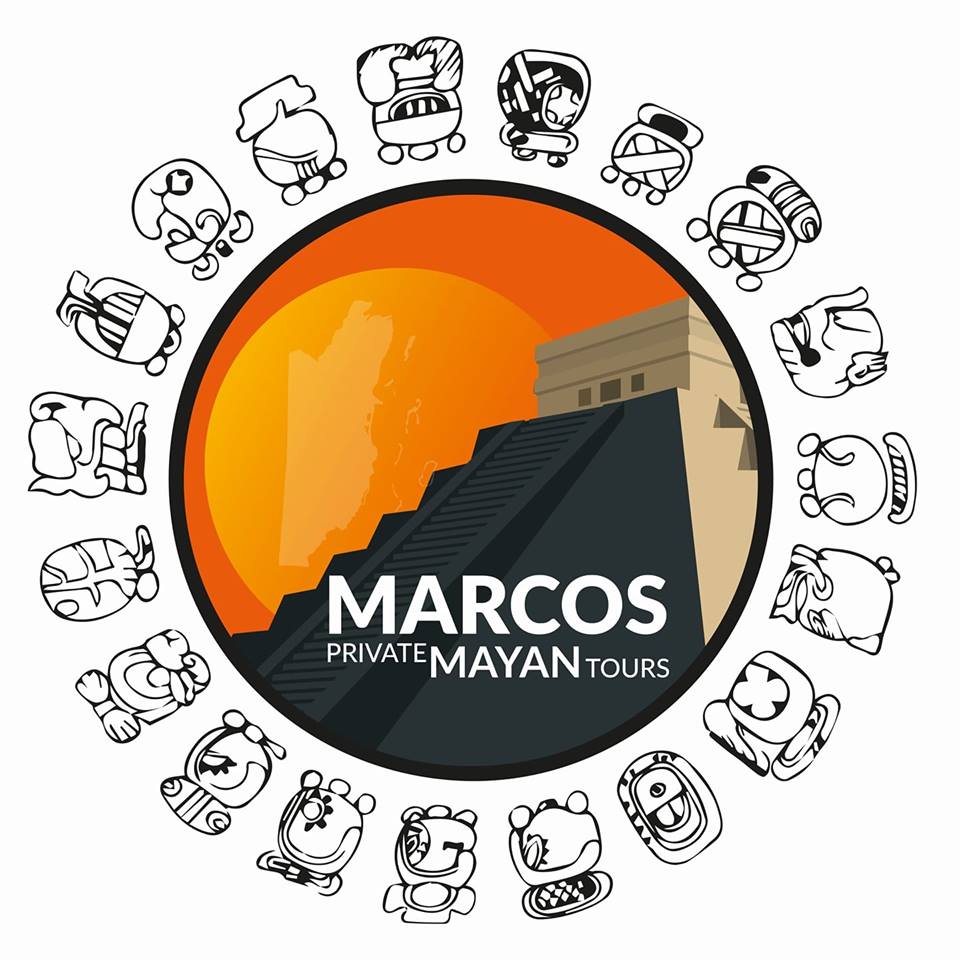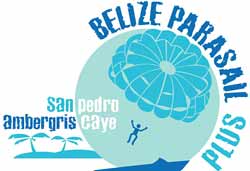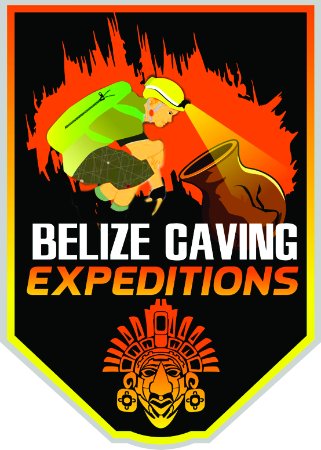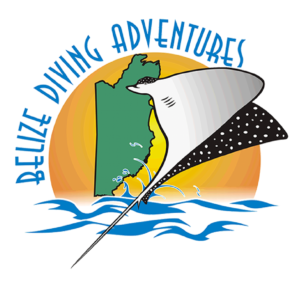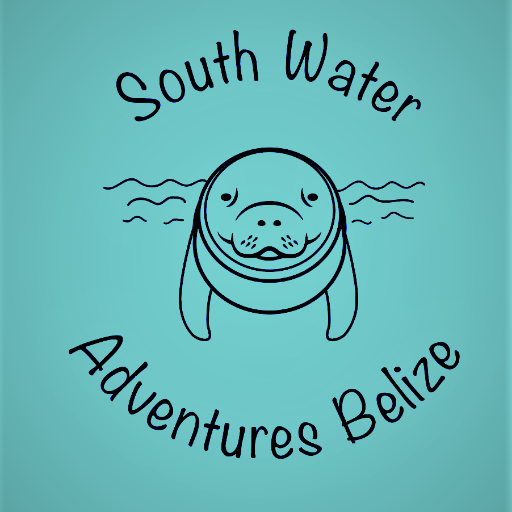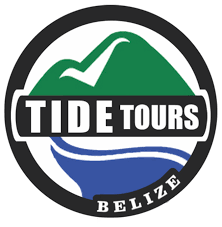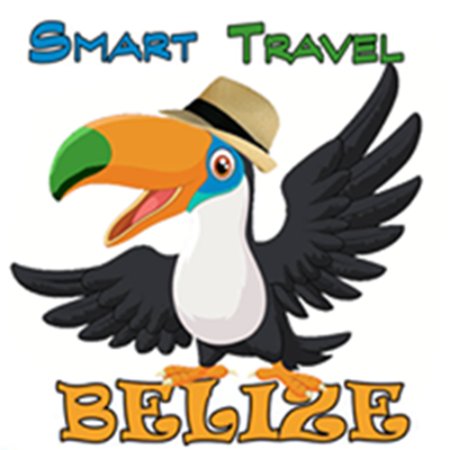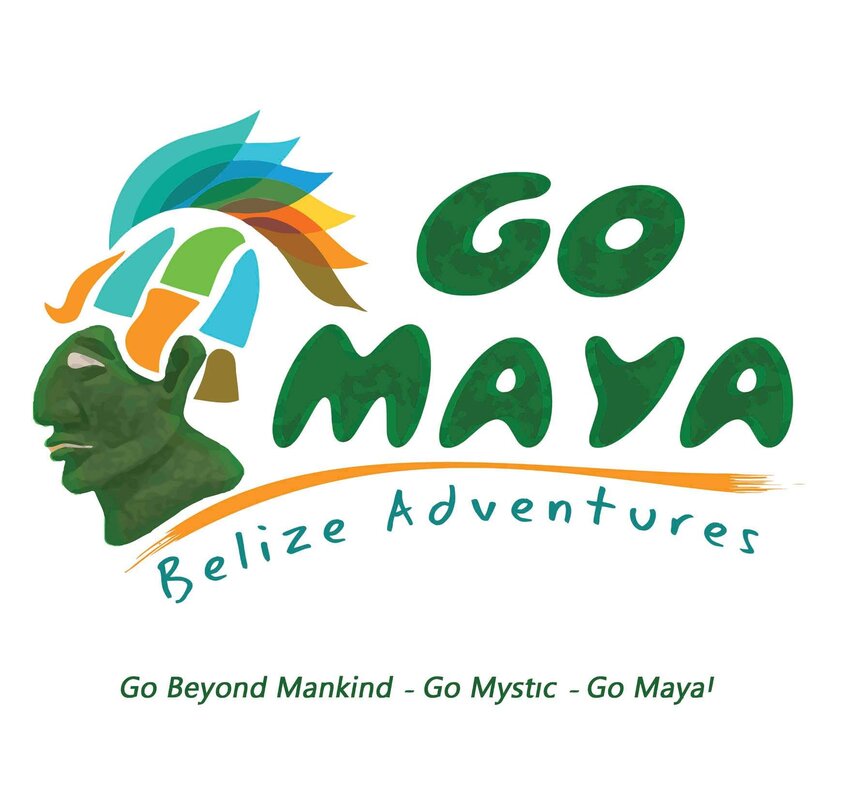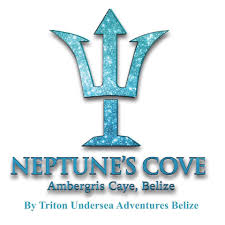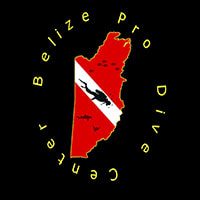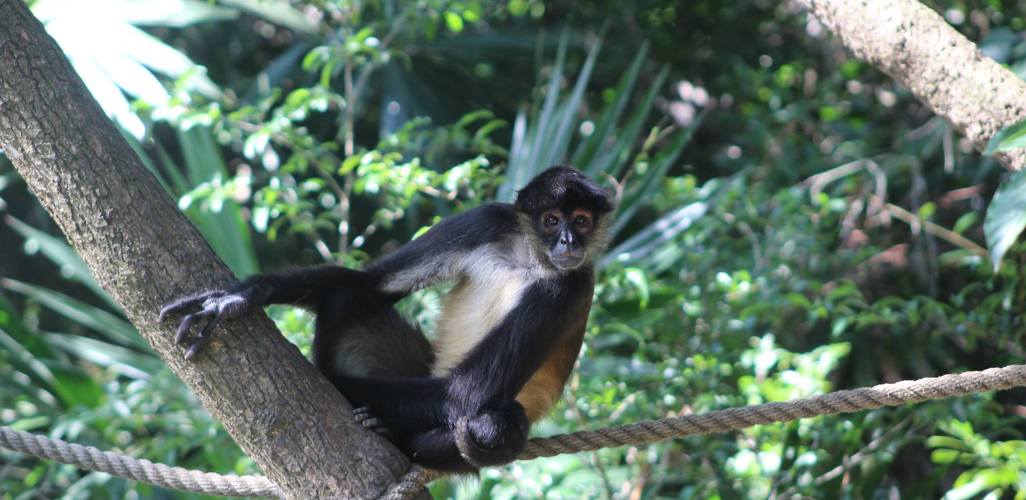 Belize is home to one of the largest New World monkeys, the spider monkey. The rainforests of Central America, Mexico and South America are where these playful primates spend most of their time. They get their name from their ability to stretch out like a spider in the canopy of the forest, high up in the tree tops. They are easily recognized with their long limbs and unique tail that is longer than their body. The tail is used as a fifth limb for support and swinging in the trees, but also provides an advantage to the monkeys by allowing them to hang from their tails and grasp hard to reach fruit. Both males and females have a black coat with patches of white, long limbs, and a tail that is just as long as the body, with males being slightly bigger than females. If they ever decide to get down to serious business, these monkeys are able to travel at amazingly high speeds, using the style known as brachiating. Brachiating is the progressive from one hold (branch or vine) to another by alternate hand grips, including the tail, which is able to support the monkey's full weight. One long stride can cover up to 40 feet. Monkey Communities - Spider monkeys are very social creatures, usually living in intricate communities of two to three dozen individuals which break off into smaller groups to sleep and forage. These communities are overseen by a single matriarch that keeps the group on a feeding and sleeping schedule as well as deciding who can be a part of the community. Populations of spider monkeys can get very loud as they communicate with one another, while some in the group sleep, others keep watch and signal with a loud barking if threatened or disturbed. Where Do They Live? - Spider monkey's live in the rainforest canopy. Spider monkeys have an important relationship with the forest, the canopy provides protective cover for the primates from aerial predators, such as large birds, and a hiding place from other predators like jaguars and pumas. Small groups of these monkeys travel long distances throughout the trees looking for food, using their long limbs to snag hard to reach fruit and leaves. They require a continuous canopy to thrive, using it to travel, sleep, and as a source of food. For this reason, human deforestation has been a critical challenge in the success of these primates in Central America. Tending to stay in the tops of the trees, they rarely coming down from the canopy, and feed over a large range of the forest. These primates tend to avoid contact with humans when they can, and have been known to leave areas that have been disturbed by humans. You can tell when a spider monkey is defending its territory by the loud barking and other vocalizations they make when they feel disturbed or threatened. Diet & Rainforest Ecosystem - Their active lifestyle requires a huge diet and spider monkeys spend most of their time eating, which is great for the rainforest! Here's why......Spider monkeys have special digestive systems that allow them to eat fruit whole, this helps them eat quickly so they can keep moving. As they travel further, they spread the seeds through defecation, thus contributing to the diversity of the rainforest ecosystem. Spider monkeys depend on the rainforest for their home, food, and communities, while the forest, in turn depends on them for seed dispersal. They can be quarrelsome & fastidious fruit eaters, only about 20% of their diet consist of leaves, which they take from the uppermost branches. Their long tails are also used to eat, either by hanging in suspension or picking up food. As a result, they can consume large amounts of foods in little time. Their diet consists of fruits and seeds and the occasional leaves, flowers and decaying wood but they also eat insects and bird eggs on rare occasions. Lifestyle - During the day, active spider monkeys tend to travel in troops, normally of about 20, which divide into smaller uni-sex groups. The adult and juvenile males going one way and the females and their dependent off-spring going another. At night they pair off in the sleeping trees, apparently choosing their partners by the whim of the moment. The troop appears to maintain a range between themselves, marked by chemical scents. The males do this, by spreading chest gland secretions on to leaves and branches. Certain calls also establish occupancy, and barking is used in repelling invaders or predators. Long, loud calls are used to coordinate troop movements. Other forms of communication include very versatile facial expressions and definitive body postures. Offspring - The newborn spider monkey spends its first three months in the constant company of its mother, initially carried close to the chest, but very shortly it soon begins to ride on her back. It continues to suckle for about a year, although it starts to forage for leaves and fruit, at around 3 months of age. Gestation Period - The gestation period for spider monkeys is 225 days, with only one offspring born at a time. As there are two or three years between pregnancies, the population is very slow to recover from any sort poaching, or sport killing. As in the case of the yellow fever epidemic of the 50's, which killed off a large proportion of Belizean spider monkeys. Conservation - Spider monkeys face several challenges trying to hold on to their habitat. Several predators can have a drastic effect on populations including eagles, hawks, owls, pumas and jaguars. Eagles and other predatory birds prey on the young of the population, taking a baby spider monkey as a meal if the canopy does not provide protection. Jaguars and puma are stealthy enough to sneak up on a spider monkey and take them down. However, even though their natural predators can have an effect on the overall population size, it is the human population that causes the most damage for this species. Deforestation has a direct effect on the range of feeding grounds the monkeys have access too, and also creates fragmentation in the forest that can separate individuals or groups from the rest of the population if they get stuck. On top of the effects we have on their habitat, the illegal pet trade targets these animals as inventory and sells them to the public. Spider monkeys carry their babies for 7.5 months before they are born and then usually have a two year period before they will have another baby. The long time span in between offspring makes it difficult for these animals to combat threats to their dwindling population fast enough. As in the case of the yellow fever epidemic of the 50's, which killed off a large proportion of Belizean spider monkeys. Although their numbers have increased, they continue to be considered an endangered species here in Belize. Aside from natural predators, human encroachment of their habitat is a serious threat to their survival - as is the misguided fad of keeping them as pets. If you are tempted to take in one of these adorable babies as a member of your household, think twice. Not only is it illegal, but they are messy and mischievous; worse, as it reaches maturity your cute little pet might suddenly turn vicious in the frustration of its unnatural life, and by then it will be too late to reintroduce him into the wild. THE SPIDER MONKEY EXHIBIT at the BELIZE ZOO At the Belize Zoo, the spider monkey exhibit has always been a popular stop for Zoo visitors. The playful primates that live in the trees enjoy showing off their acrobatics for their spectators. The Yucatan Spider Monkey that calls Belize home is an endangered species, which makes any successful birth even more significant and welcomed! The Yucatan Spider Monkeys have black hair that is bristly and often matted. They also have a tan colour around their eyes, whiskers, chin and head area. Although males and females look similar, the female Spider Monkeys tend to be a little bigger in size but weigh less; their average weight is 19 pounds. Populations took a steep drop in the 1950’s due to a strain of yellow fever, but, today, their major threats are deforestation and the pet trade. Fruits make up a big part of the spider monkey diet, which makes them important seed dispersers. Their population decline directly impacts the productivity of our forests.In the wild, spider monkeys live in large social groups. The father has no direct parenting role, but protects the group’s territory from intruders. The Zoo is grateful to have a small troop of monkeys in an environment where Belizeans can come and observe them from a safe distance, and learn so much about their behavior, ecology, and threats. However, a strong message is also reinforced at the monkey exhibits. “Monkey business is bad business!,” the signs boldly state. As fascinating as they may be, having monkeys as pets is NOT an option. Apart from being illegal in Belize, the pet trade only works to destroy an already endangered population. A mother monkey would never abandon its young, so you can be sure the cute baby being sold just is an unfortunate orphan whose mother was killed. MONKEY FACTS
BLACK HOWLER MONKEY FACTS
YUCATAN SPIDER MONKEY FACTS
THE MONKEY ORCHID (aka Dracula Gigas Orchids) Native to Central America & Parts of South America The scientific name "Dracula", Latin for "little dragon", refers to the creepy appearance of the flower. There are approximately 100 different species of dracula orchids. They are native to Central America and parts of South America.
Species in this genus are quite diverse, but the most popular are the species which resembles a monkey's face. These unusual, showy flowers are one of the most amazing orchids you’ve ever seen. Mother Nature is so brilliant in its design. INTERESTING FACTS ABOUT MONKEY ORCHIDS (dracula gigas) Orchids produce some of the most interesting and unique flowers. The Dracula genus is most famous for containing the monkey face species. However, just a few members of the genus (Dracula simia, Dracula gigas, Dracula benedictii and Dracula wallisii) have monkey-like appearance. The center of the flowers resemble the face of a monkey, and indeed, these unusual looking flowers look just like a monkey. And the most interesting thing is that different flowers provide different expressions of the monkey face. Some members of this genus (Dracula simia and Dracula gigas) are commonly known as "Monkey Orchids", but the common name Monkey Orchid is not only restricted to this genus. Other species, such as Calanthe tricarinata and Orchis simia are also known as Monkey Orchids. The plants usually grow at high altitudes, between 5,250-8,200 feet.
0 Comments
Your comment will be posted after it is approved.
Leave a Reply. |
Is located on the island of Ambergris Caye, directly across from the Belize Barrier Reef, off the mainland coast of Belize. The property is nestled in a cluster of Australian Pine trees, backed to a littoral jungle, and surrounded by tropical gardens. It's about a one minute walk from the property to the beach, and a 10-15 minute drive from the island airstrip to the property.
We offer one bedroom suites (455 s.f.) of living area to include: livingroom, kitchenette, private bathroom and bedroom. We are also about a one minute walk from one of the best restaurants on the island serving (breakfast, lunch & dinner). Within walking distance you can find: (3) blocks is Robyn's BBQ (4) blocks is 2 fruit stands (5) blocks local grocery store IF YOU'RE COMING TO BELIZE TO............... If you're coming to Belize to dive the Blue Hole, descend the shelf walls at Turneffe, snorkel the Barrier Reef, explore Mayan ruins, rappel into a cave, kayak along the river through caves, zip line through jungle tree tops, hike through a cave to see an ancient human skeleton, swim with sharks, listen to Howler Monkey's, hold a boa constrictor, feed a jaguar, horseback ride through the jungle, canoe through a cave, rappel down a waterfall, sail around an island, enjoy cocktails & dinner to a sunset, climb 130' feet to the top of a Mayan ruin, rip up the jungle trails on an ATV, float through a series of caves on a tube, and sip on a rum punch..... then this is the place for you. Belize Budget Suites, offers you clean, affordable, attractive, accommodations, at prices that allow you to do all the things just mentioned. Archives
February 2021
Categories
All

For All Your Home Improvement Needs

For all Your Real Estate Needs
501-226-4400 10 Coconut Dr. San Pedro, Belize Your Ad Could Go Here
|

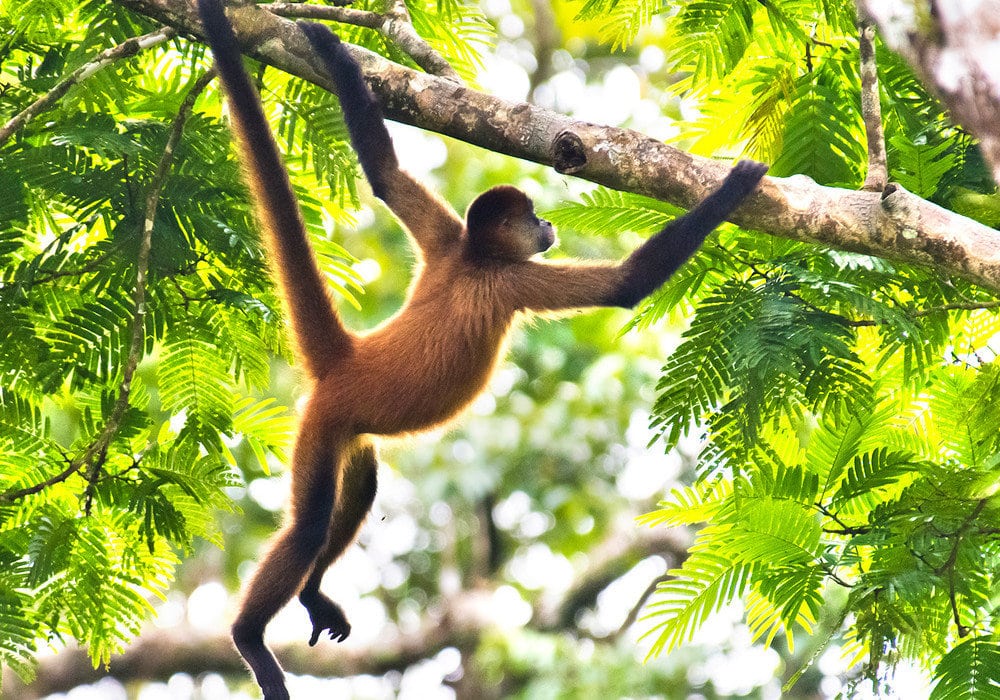
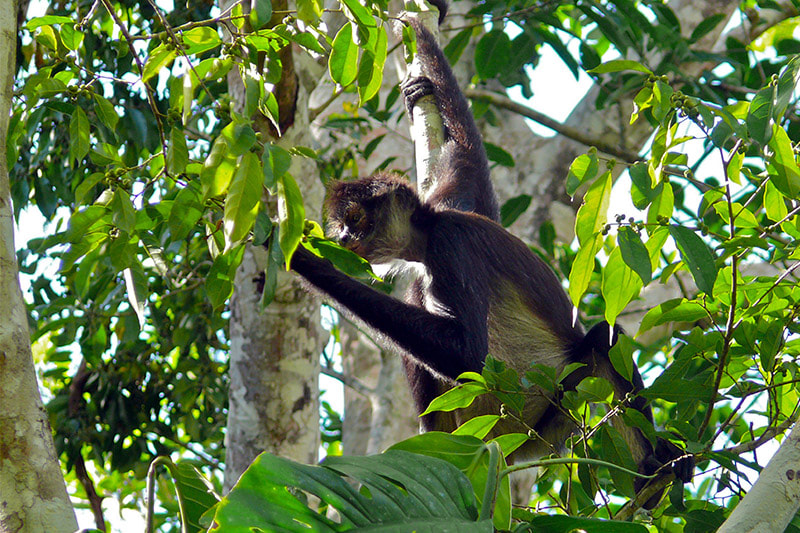
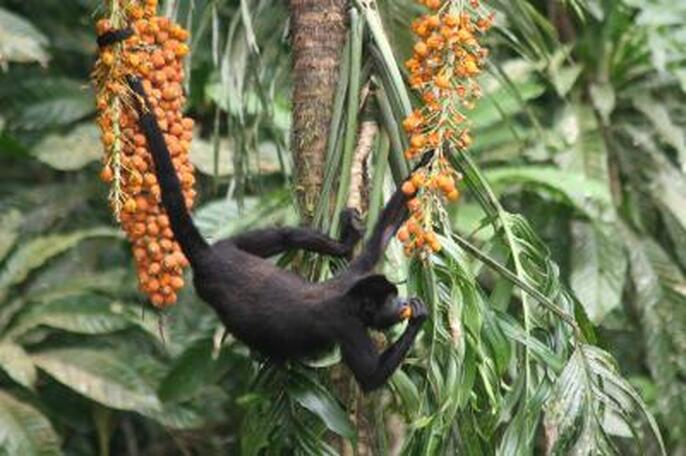
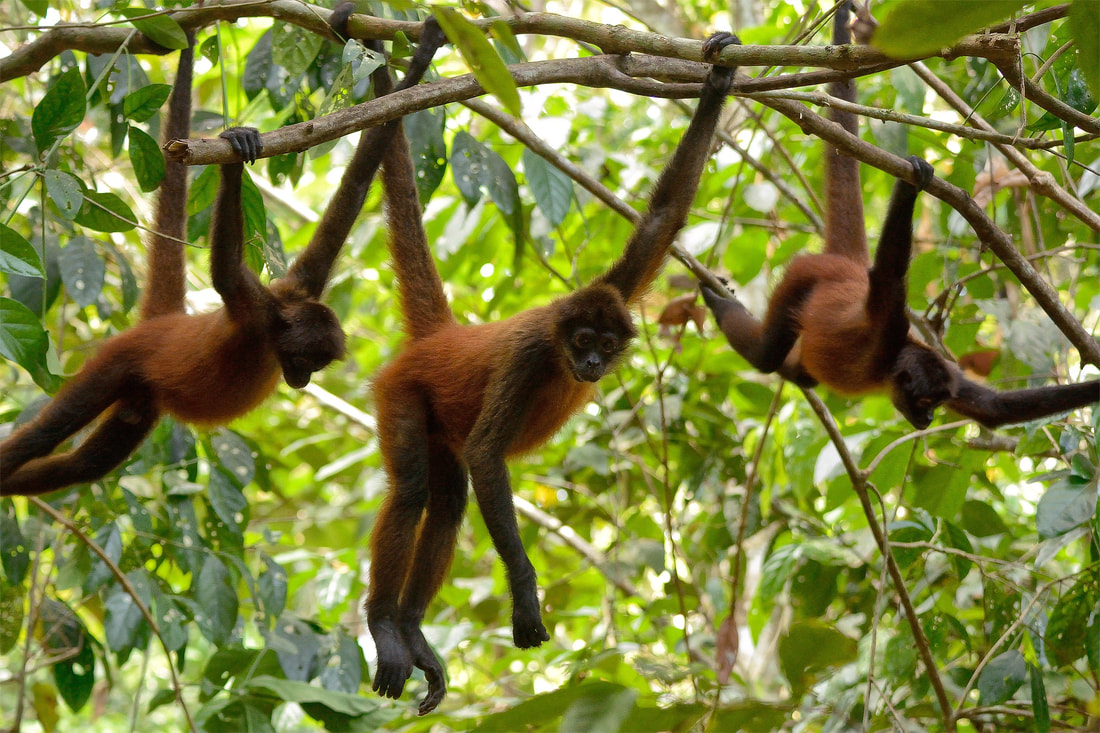
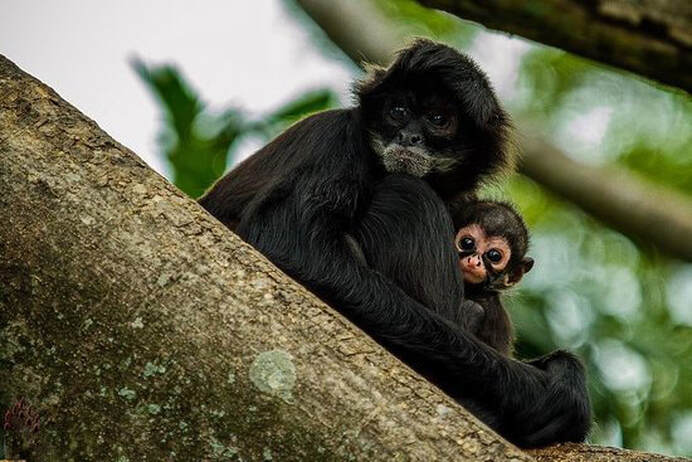
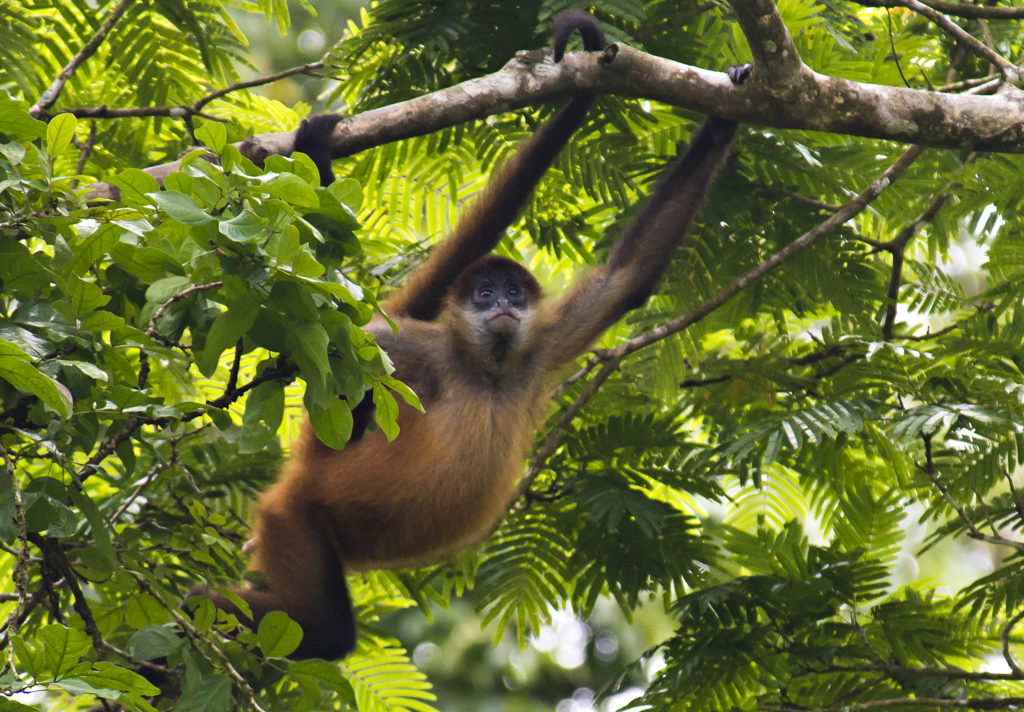
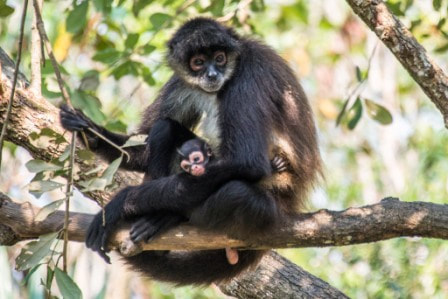
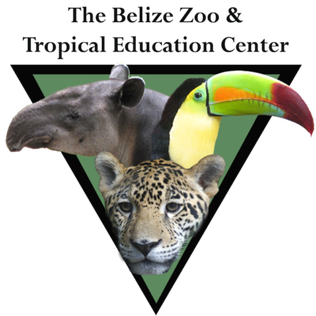
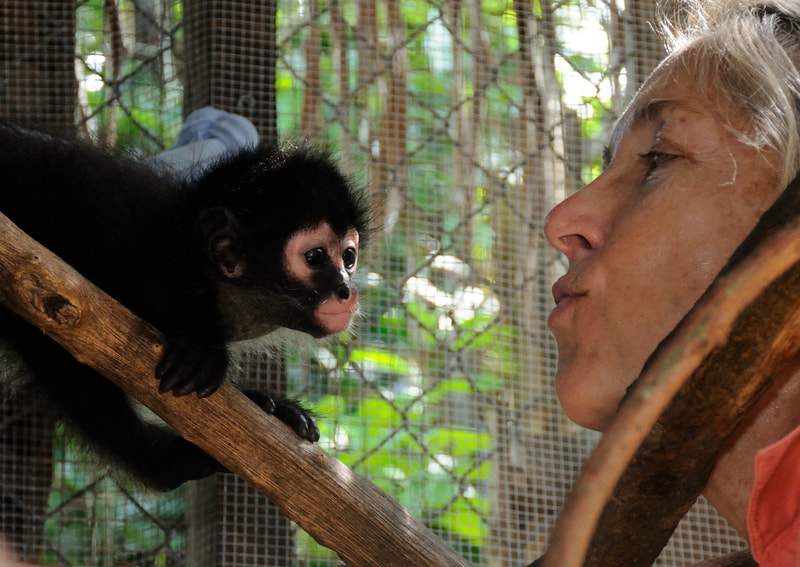
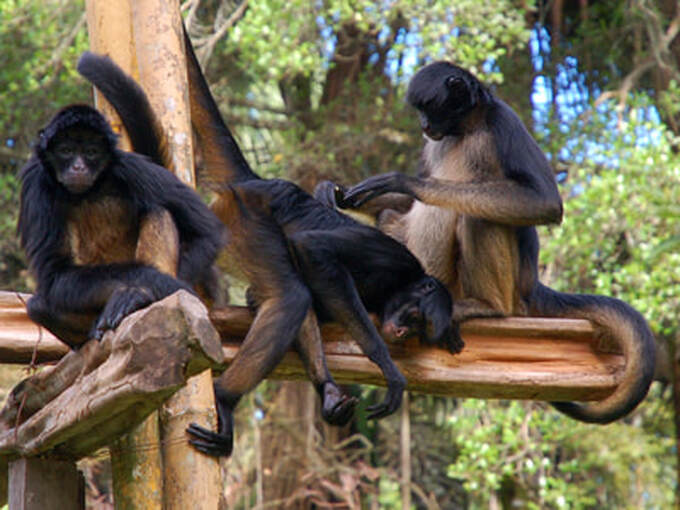
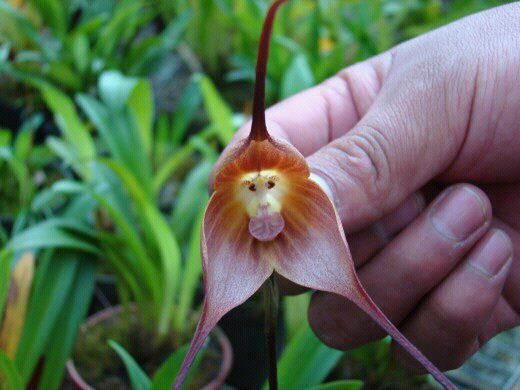
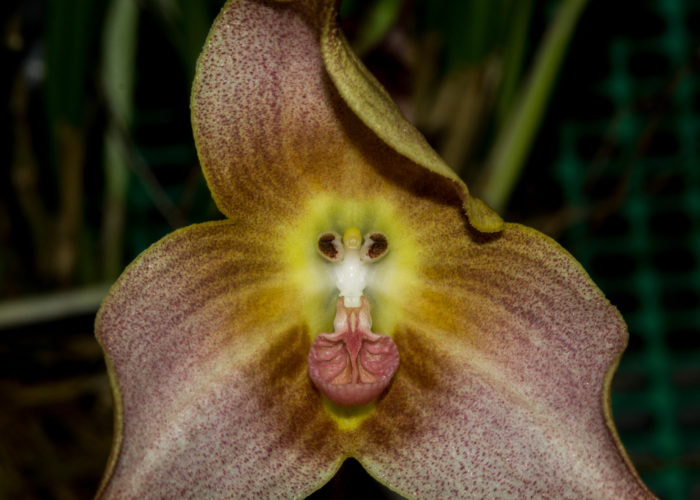

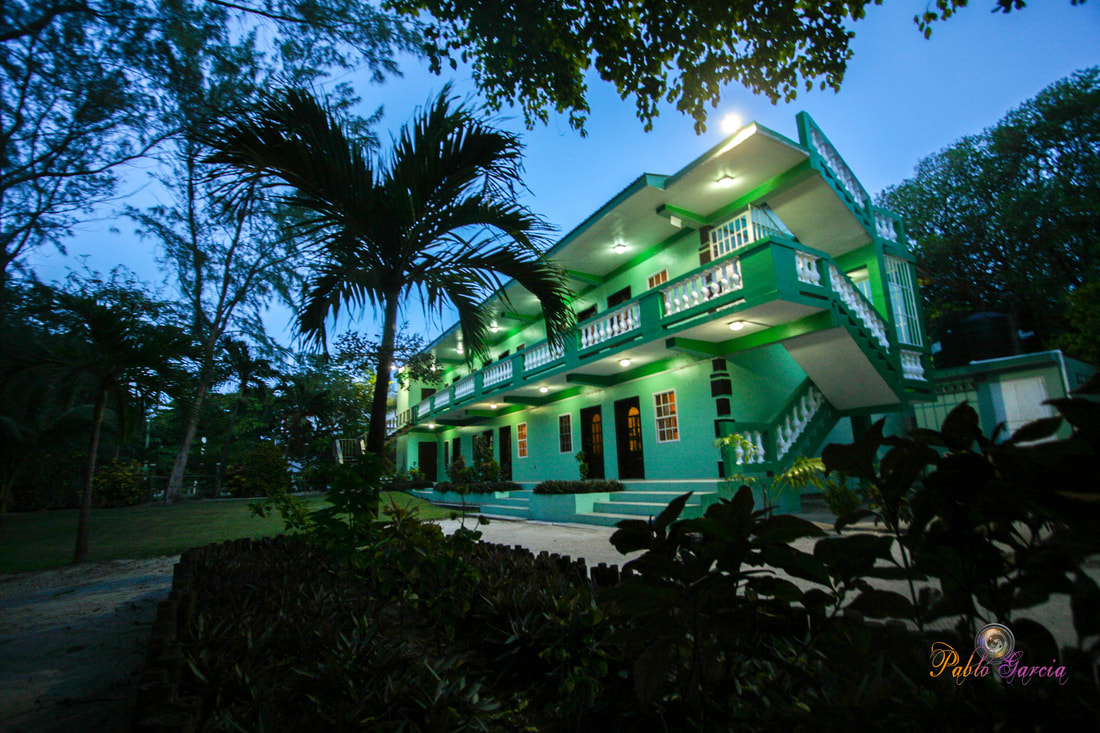
 RSS Feed
RSS Feed

